Top 10 Lowest Points On Earth - Meters Below Sea Level
♦ What Is The Highest Peak On Earth? The Answer Is Not Everest
♦ Top 10 Highest Mountains in the World
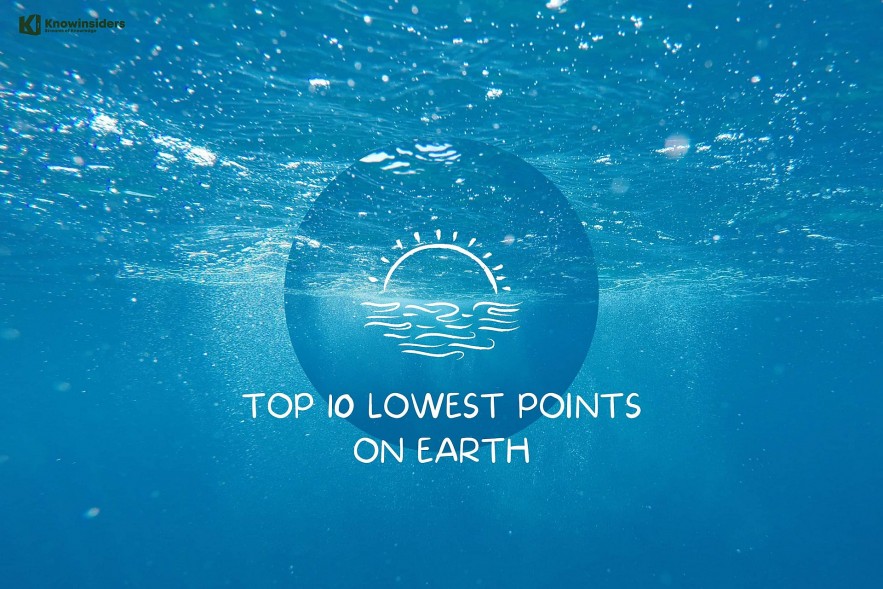 |
| Top 10 Lowest Points On Earth. Photo KnowInsiders |
| Contents |
From the highest of highs (8,849 meters/29,031 feet above sea level) to the lowest of lows (414 meters/1,358 feet below sea level), the surface of the Earth exudes an impressive range of elevations. Check out top 10 lowest points on Earth in the table below (ranked by Knownsiders.com).
Top 10 Lowest Points On Earth
1. Dead Sea
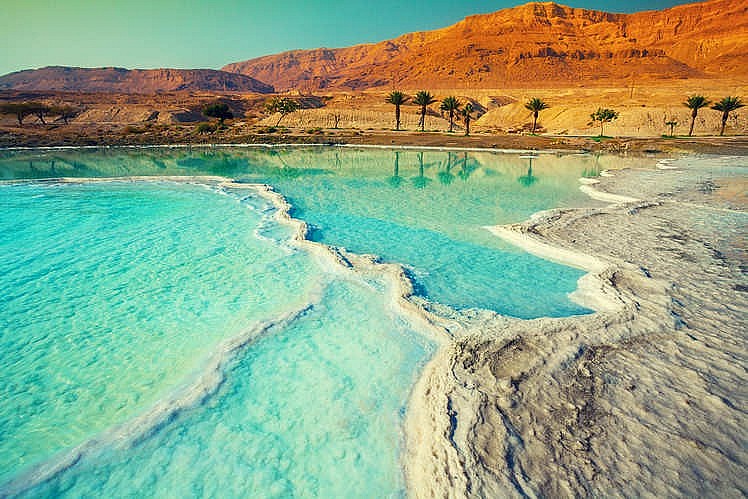 |
| Dead Sea. Photo Times of India |
The Dead Sea, also known as Al-Bar Al-Mayyit in Arabic and Yam HaMela in Hebrew, is a hypersaline lake that sits at the lowest point on the Earth's surface at 414 meters/1,358 feet below sea level. This geographical marvel is situated in the western half of Israel and the eastern half of Jordan, in the middle of the Judean Desert (Eastern half).
The Dead Sea lies tucked away between the Transjordanian plateaus (to the East) and the hills of Judea (to the West) (to the East). Because the Jordan River was redirected a long time ago, resulting in a net negative flux, the lake's water levels have likewise been continuously decreasing at a rate of around one meter per year.
2. Lake Assal, Djibouti
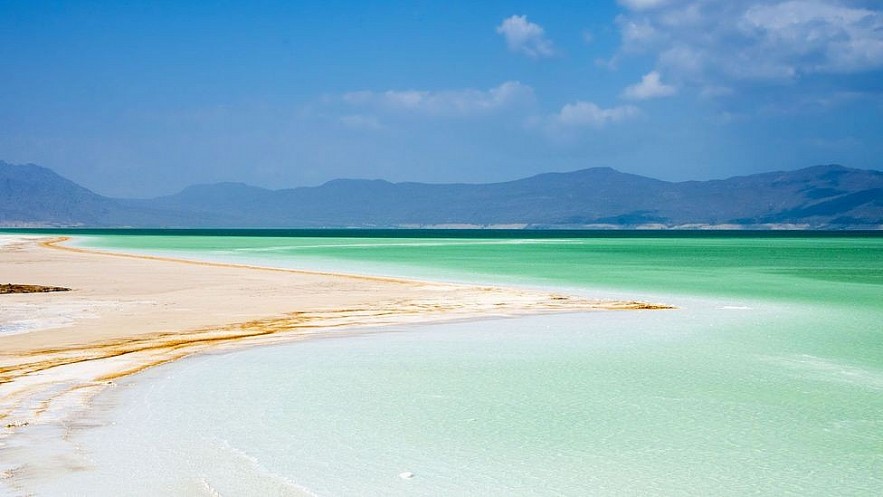 |
| Lake Assal. Photo BBC |
Central Djibouti, namely Lake Assal, a saline lake. It is the lowest point in Africa, located 515 feet (157 meters) below sea level. A lot of salt has been mined from there.
The lake formerly held freshwater and has a lengthy history. A previous inundation by the sea is thought to be responsible for the lake's current salinity. Some of the lake's beaches are overgrown with prickly plants and shrubs. Although the lake's water is mineral-rich, no living forms have been spotted there. Large numbers of microorganisms can be found in the lake.
READ MORE: Top 10 Astonishing and Beautiful Lakes in Europe
3. Turpan Depression, China
 |
| Turpan Depression. Photo peapix |
At a depth of 505 feet (154 meters), this depression is the third-deepest place on Earth. The Turpan Depression is the hottest and driest part of China, and it may be found in the western desert region, south of Mongolia.
This vast valley, which was created by a fault, is encircled on all sides by some of the world's highest mountains, including the Tian Shan and the Bogda Shan.
4. Qattara Depression, Egypt
 |
| Qattara Depression. Photo Google site |
The Qattara Depression, located in northern Egypt's Western Desert, is the country's biggest (45,000 km2) and deepest (145 m). Not only is it the closest Depression to the Mediterranean Sea (just 56 km away), but it is also the deepest. There are two distinct geomorphic features in the Depression, the escarpments and the floor.
The Depression Floor is bounded on the north and west by escarpments, while on the east and south it rises gradually to an altitude of 200 m above sea level. The escarpments have a height of around 200 meters above sea level, have steep slopes down to the floor, and are cut through by short, narrow wadis.
5. Caspian Depression, Kazakhstan
 |
| Caspian Depression. Photo alamy |
Many people throughout the world are unaware of the huge natural treasures that may be found in the former Soviet Union due to its sheer size. The northern section of the Caspian Sea is located in the low-lying, flat-land region known as the Caspian Depression, which also holds the record for being the biggest contained body of water on Earth. Despite being one of the shallowest seas on Earth (at a mere 28 m below sea level), the Caspian Sea is really just the second-deepest body of water in the world; the lowest point in the Caspian Depression is 132 m below sea level.
Many scientists believe that tectonic processes isolated the depression from the open ocean eons ago, creating the vast salt lake now known as the Caspian Sea. Part of the historic Silk Road passed through this area many years ago. It was during the reign of Peter the Great in the 18th century that Fedor Soimonov, a hydrographer and pioneering explorer of the Caspian Sea, created the first accurate maps of this body of water. Soimonov created the first comprehensive study and contemporary maps of the Caspian region, titled "Pilot of the Caspian Sea."
6. Laguna del Carbon
 |
| Laguna del Carbon. Photo billliken |
At a whopping 105 meters (344 feet) below sea level, Laguna del Carbón (or "Coal Lake") in Argentina is the lowest point in both the Southern and Western Hemispheres.
Located near the Patagonian town of Puerto San Julian, it is part of the Province of Santa Cruz and the Department of Corpen Aike. There is a larger region that includes Laguna del Carbón called San Julian's Great Depression. The saltiness and endorheia of Coal Lake are reminiscent to those of the Salton Sea.
7. Death Valley, CA, USA
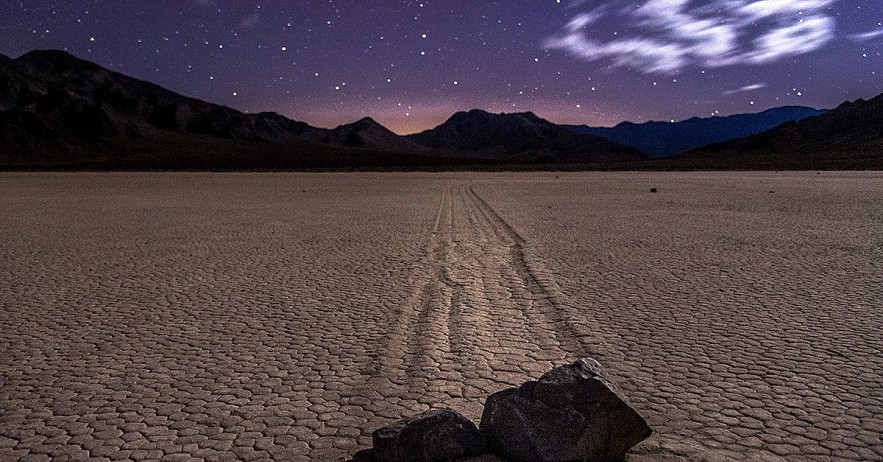 |
| Death Valley. Photo DOI Gov |
The lowest point in the Americas is located in Death Valley. Badwater Basin, which is located 282 feet below sea level, is a bizarre environment that fools the senses. What seems like snow to outsiders is actually a heavy coating of salt covering the valley bottom. How, though, did all that salt get there? Minerals leached from rocks and precipitation flow downward.
As a result of the high rainfall, temporary lakes occur in Badwater Basin. Minerals concentrate when water evaporates, leaving behind just salts. These immense, otherworldly salt flats have formed at the base of the continent over the course of thousands of years.
READ MORE: Top 10 Most Famous & Beautiful Valleys In the World
8. Salton Sea, CA, USA
 |
| Salton Sea. Photo wikivoyage |
Located in southern Riverside and northern Imperial counties, the Salton Sea is the state's biggest lake (map at right).
The current Salton Sea was created when Colorado River floodwater breached an irrigation canal being constructed in the Imperial Valley in 1905, sending water gushing into the Salton Sink. This was just the latest in a long series of large seas that formed in the basin and subsequently dried up due to natural flooding from the river. Irrigation runoff from the Imperial and Coachella valleys and nearby rivers have subsequently kept the Sea at a healthy level.
As a terminal lake, the salinity of the Sea has increased over time, and is now 50% higher than that of the ocean. The fish and animal resources of the Sea are being negatively impacted by rising salinity and other water quality concerns such as temperature extremes, eutrophication, and the associated anoxia and algal production.
9. Lake Eyre, Australia
 |
| Lake Eyre. Photo azertac |
Facts about Lake Eyre:
Lake Eyre is Australia’s largest salt lake
It’s located 647 km north of Adelaide, in the state of South Australia
Lake Eyre is actually comprised of 2 lakes: Lake Eyre North and Lake Eyre South
The lakes are connected by the Goyder Channel, which is 15 km long
Together, both lakes are 144km long and 77km wide
Lake Eyre is the lowest point below sea level on the Australian mainland (15.2m below sea level)
Lake Eyre is the focal point of Australia’s second largest drainage system, the Lake Eyre Basin
The Lake Eyre Basin covers over 1 million square kilometres
The Lake was named after explorer Edward John Eyre, the first European to see it in 1840
Lake Eyre experiences a small (1.5 m) flood every 3 years, a large (4 m) flood every 10 years and fills an average of only four times each century!
10. Lammefjord, Denmark
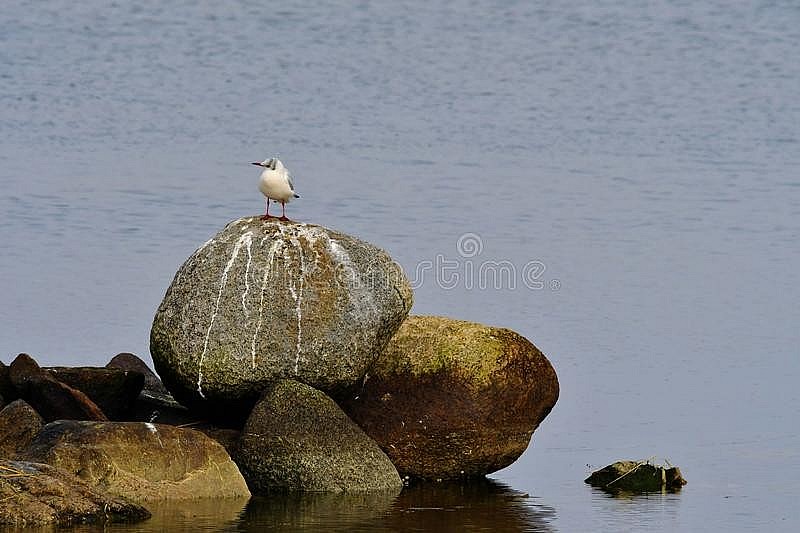 |
| Lammefjord. Photo dreamstime |
Here in Denmark, at the foot of the Odsherred peninsula, you'll find the polder known as Lammefjord. Large portions of what was formerly a deeply branching arm of the sea going west from the Isefjord have been recovered as agricultural land.
There is still water in the eastern third of the fjord, beyond the Avdebo dike, but the term "Lammefjorden" is generally often used to refer primarily to the landmass to the west of the dyke. Carrots and potatoes thrive on the sandy soil of the old seabed.
 Facts About The Existence of Giants On Earth Facts About The Existence of Giants On Earth It seems that we only hear about the giants through myths. However, more discoveries of fossils and remains of giants show that the giants do ... |
 Which Animal Is The Biggest, Heaviest, Tallest on Earth Which Animal Is The Biggest, Heaviest, Tallest on Earth Cùng khám phá những động vật lớn nhất, nặng nhất, cao nhất hành tinh dù ở trên cạn và dưới đại dương. |
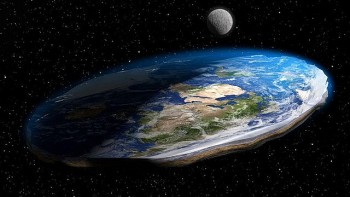 What Shape Is The Earth? Facts About The Earth's Rotation What Shape Is The Earth? Facts About The Earth's Rotation As the only planet in the universe with life, Earth contains many unanswered mysteries. What is the shape of the Earth? How does it rotate? ... |
























